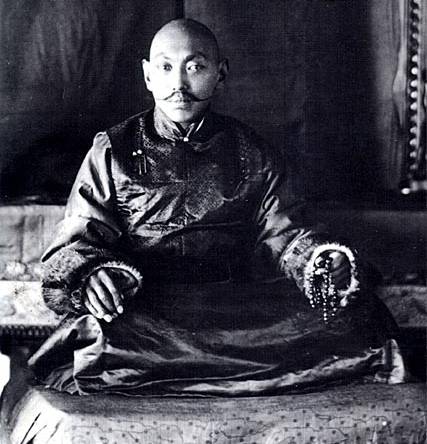The Dalai Lamas are a Geluk incarnation line whose Ganden Podrang government ruled Tibet from the seventeenth to the mid-twentieth century. It was the Third Dalai Lama, Sonam Gyatso, who was given the title of Dalai Lama by the leader of the Tumet Mongols, Altan Khan, which was posthumously applied to his previous incarnations, Gendun Drub and Gendun Gyatso. The Fourth Dalai Lama's Mongolian heritage cemented the Geluk-Mongol alliance, and with the Fifth Dalai Lama, the governance of Tibet by the Dalai Lamas began. It was the Fifth who also shifted the Dalai Lama’s residence from Ganden Podrang at Drepung Monastery to the newly constructed Potala Palace in Lhasa, henceforth the seat of the Tibetan government. The Thirteenth Dalai Lama declared independence from Beijing and ruled as head of a sovereign state. In 1950 Chinese forces occupied the country and the Fourteenth Dalai Lama fled to India, where he still lives in exile.
Biographies
The First Dalai Lama, Gendun Drub
b.1391 - d.1474
Gendun Drub, a close disciple of Tsongkhapa, was posthumously identified as the First Dalai Lama, a previous incarnation of the Third Dalai Lama, Sonam Gyatso, the first to hold the title. He ordained and trained in the Kadam monastery of Nartang. He was instrumental in spreading the new Geluk tradition in Tsang, establishing Tashilhunpo in 1447 and serving as its first abbot until his death. Gendun Drub was considered by his disciples to be an emanation of Avalokiteśvara, the bodhisattva of compassion.
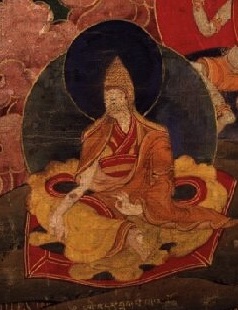
The Second Dalai Lama, Gendun Gyatso
b.1476 - d.1542
Gendun Gyatso was the reincarnation of Gendun Drub. He served as abbot of three of the most powerful Geluk monasteries in both U and Tsang, significantly contributing to the spread of the Geluk tradition. Gendun Gyatso retained relations to his family’s religious traditions, which included Nyingma, Shangpa Kagyu, and Sakya teachings. He built the Ganden Podrang at Drepung around the year 1530, which came to be the residence of the Dalai Lamas and the seat of their government of Tibet in later centuries. His abbacies occurred during a time of intermittent war between the Kagyu rulers of Tsang and the Geluk leaders of Lhasa.
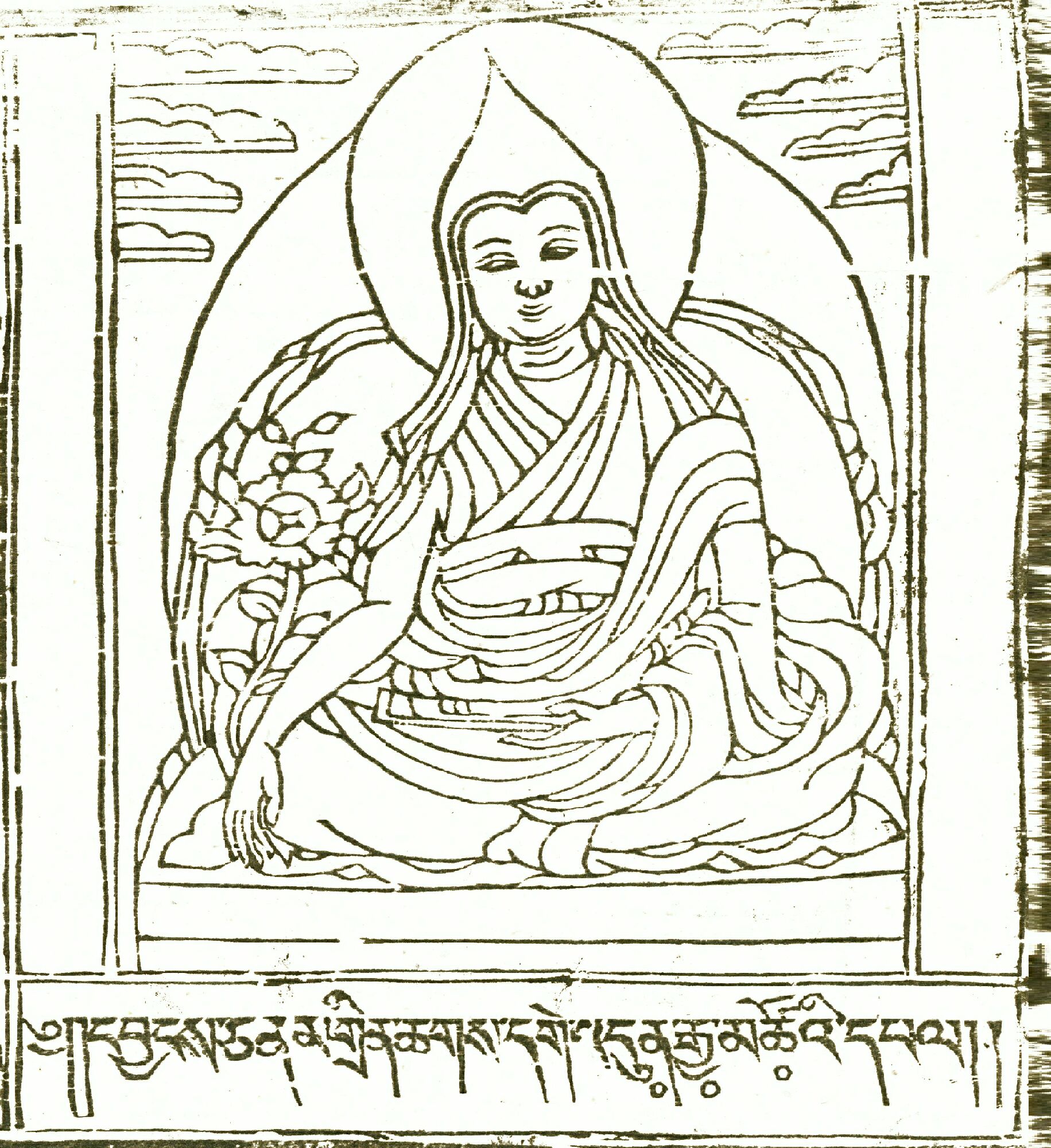
The Third Dalai Lama, Sonam Gyatso
b.1543 - d.1588
Sonam Gyatso was given the title of Dalai Lama by the leader of the Tumet Mongols, Altan Khan, which was posthumously applied to his previous incarnations, Gendun Drub and Gendun Gyatso. A tireless missionary of the Geluk teachings, he was instrumental in what is known as “the second conversion of the Mongols”, bringing the Geluk teachings to the region. Sonam Gyatso founded several important Geluk monasteries, including Kumbum, Litang Ganden Tubchen Chokorling, and Namgyel Monastery. in 1581 he served as the thirteenth throne-holder of Chamdo Jampa Ling for six months.
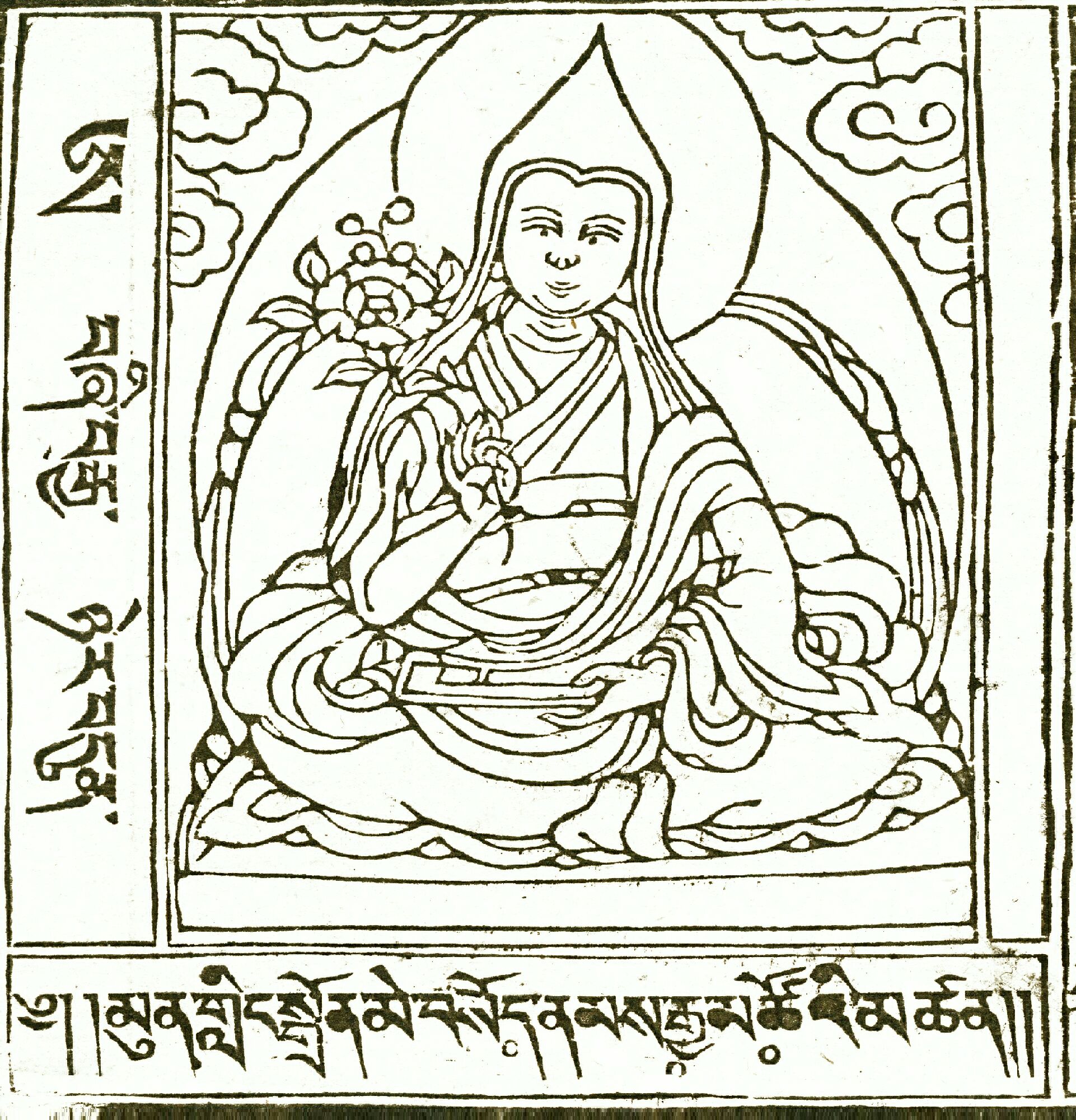
The Fourth Dalai Lama, Yonten Gyatso
b.1589 - d.1617
Yonten Gyatso, the Fourth Dalai Lama, was born in Mongolia, the grandson of the successor to Altan Khan, who had invited the Third Dalai Lama to Mongolia. Although he died young, his Mongolian heritage cemented the Geluk-Mongol alliance, allowing the hierarchs in Drepung to exerted considerable power in Tibet.
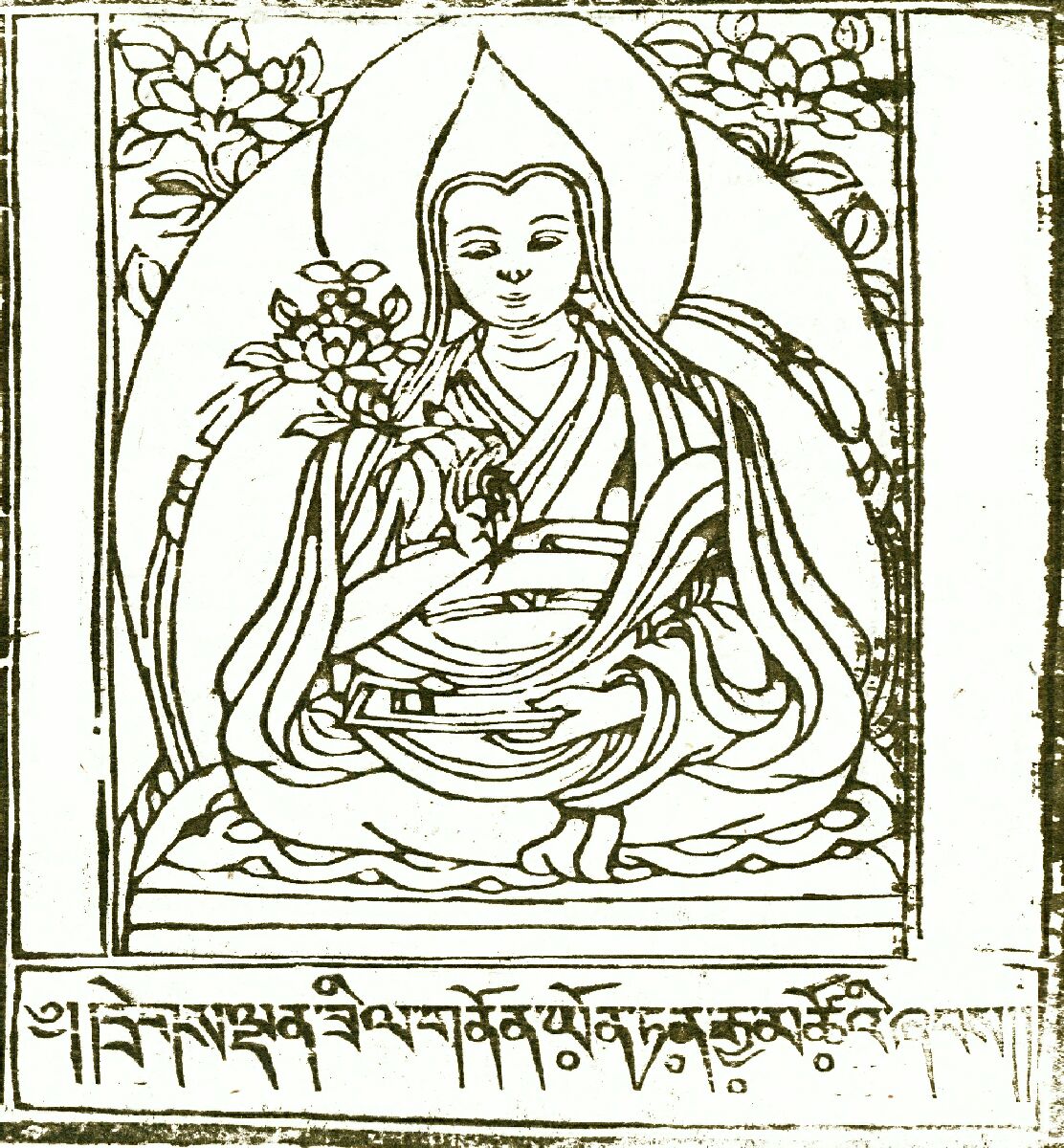
The Fifth Dalai Lama, Ngawang Lobzang Gyatso
b.1617 - d.1682
The Fifth Dalai Lama, Ngawang Lobzang Gyatso, popularly known "The Great Fifth", was the first dalai lama to assume political rule of Tibet, forging lasting alliances with Mongol armies and the Qing court in China. He was both a brilliant tactician and a religious thinker, authoring numerous commentaries and ritual manuals, as well as histories and biographies. Although responsible for considerable sectarian violence and Geluk hegemony, including the suppression in Tibet of the Jonang tradition and the forcible conversion of many monasteries to the Geluk faith, the Fifth Dalai Lama never abandoned his family’s Nyingma affiliations, and he sponsored the establishment or renovation of several Nyingma monasteries. The great palace of Potala that he built as his residence and seat in Lhasa was named after Avalokiteśvara’s pure land, Potalaka, a naming that contributed to the dissemination of the identification of the dalai lamas as an emanation of the bodhisattva.
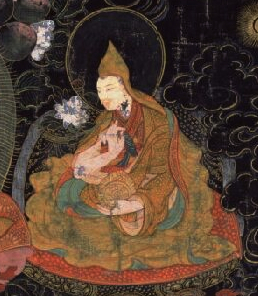
The Sixth Dalai Lama, Tsangyang Gyatso
b.1683 - d.1706
The life and legacy of the Sixth Dalai Lama Tsangyang Gyatso is an uncertain admixture of tradition and controversy. Kept under virtual house arrest for a decade following his discovery, he was enthroned at a time of great political unrest in Tibet. He is often portrayed as a poet and libertine, who disrobed rather than take full monastic ordination. Following the murder of his regent, Sanggye Gyatso, he was ordered to the court of the Manchu Emperor in Beijing. According to one tradition, he died of fever in 1706 at Kunganor, but there is another tradition, in which he escaped and died in Alashan in 1746.
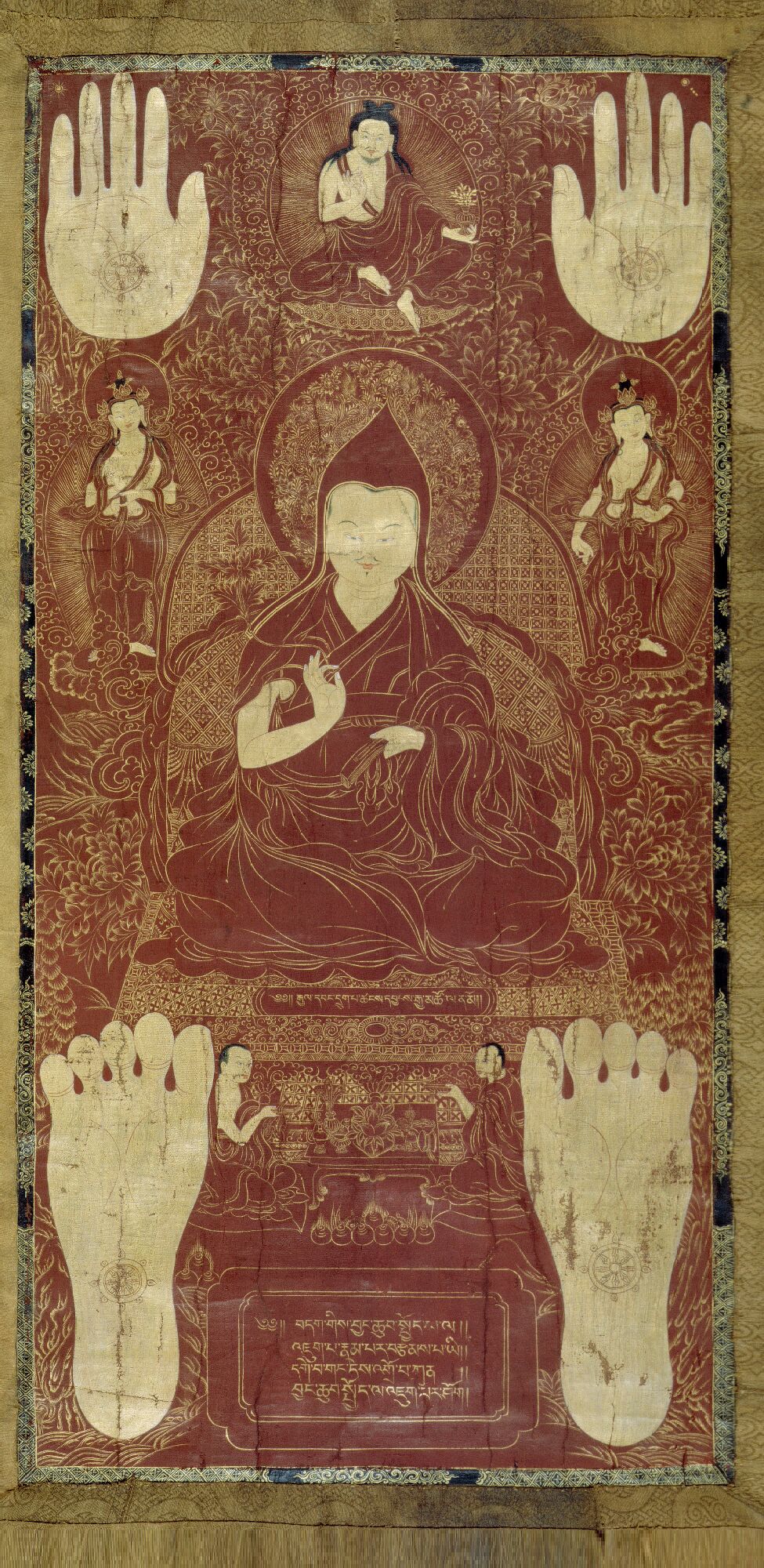
The Seventh Dalai Lama, Kelzang Gyatso
b.1708 - d.1757
The life of the Seventh Dalai Lama Kelzang Gyatso spanned a troubled period in Tibetan history, during which the Land of Snows was transformed from the battleground of competing Mongol factions into a protectorate of the Manchu Qing dynasty. Trained as a monk-scholar, the turmoil that surrounded his youth and early adulthood had effectively excluded him from an active political role until the events of 1747-1750 propelled him to head the Tibetan government at the age of forty-three. It may be said that the institution of the Dalai Lama, given its characteristic religio-political foundations under the leadership of the Great Fifth, assumed its mature form under the Seventh, whose relations with the Manchus set the pattern for Sino-Tibetan affairs throughout the remainder of the Qing dynasty.
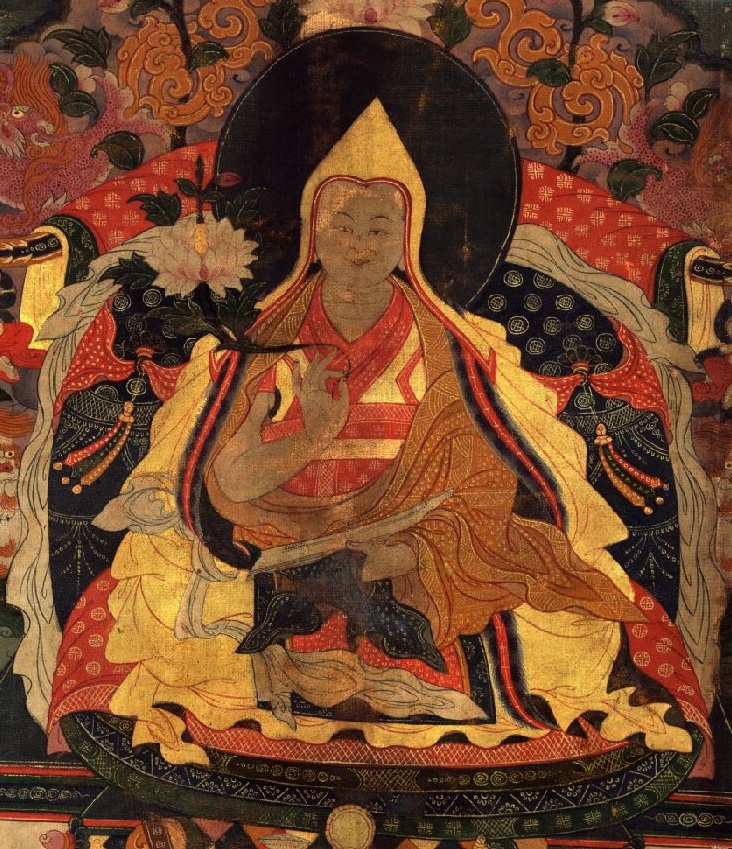
The Eighth Dalai Lama, Jampel Gyatso
b.1758 - d.1804
The tenure of the Eighth Dalai Lama, Jampel Gyatso, was a tumultuous era in the Himalayan region, filled with battles and intrigues. This period saw the emergence of the first contacts between Tibet and the British, and the Manchurian representatives of the Qing Empire also managed to enhance its position in Tibet when it was called upon to eject the invading Gurkhas. The Eighth Dalai Lama was an active leader in the midst of all of this, despite being disinclined to rule.
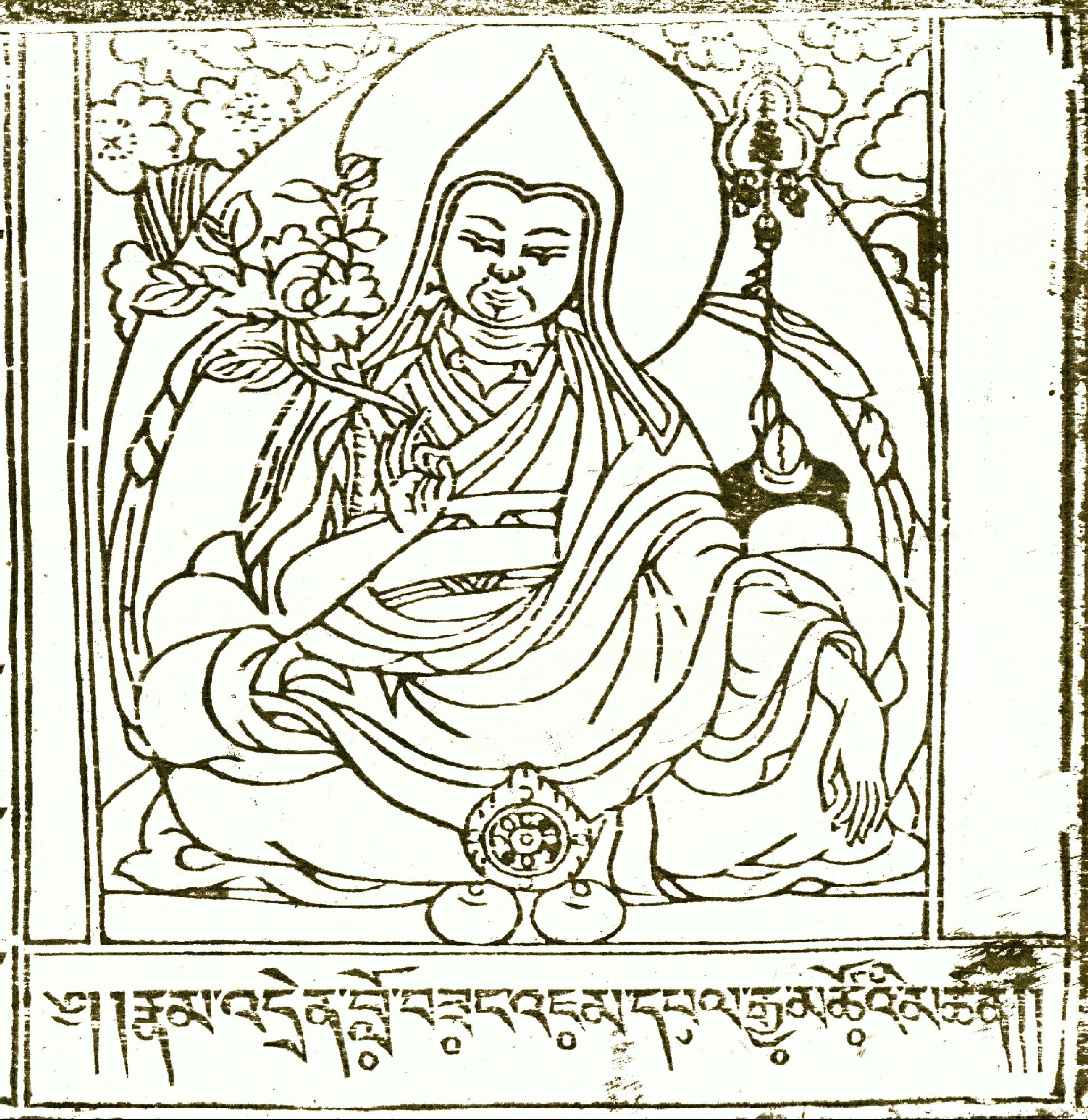
The Ninth Dalai Lama, Lungtok Gyatso
b.1805 - d.1815
The Ninth Dalai Lama, Lungtok Gyatso, lived only the age of nine. Born in Kham in 1805, he was enthroned to the seat of the Dalai Lamas in 1808 and a major restoration within the premises of Potala Palace was carried out in 1810 under his patronage. He died at the age of nine in 1815.
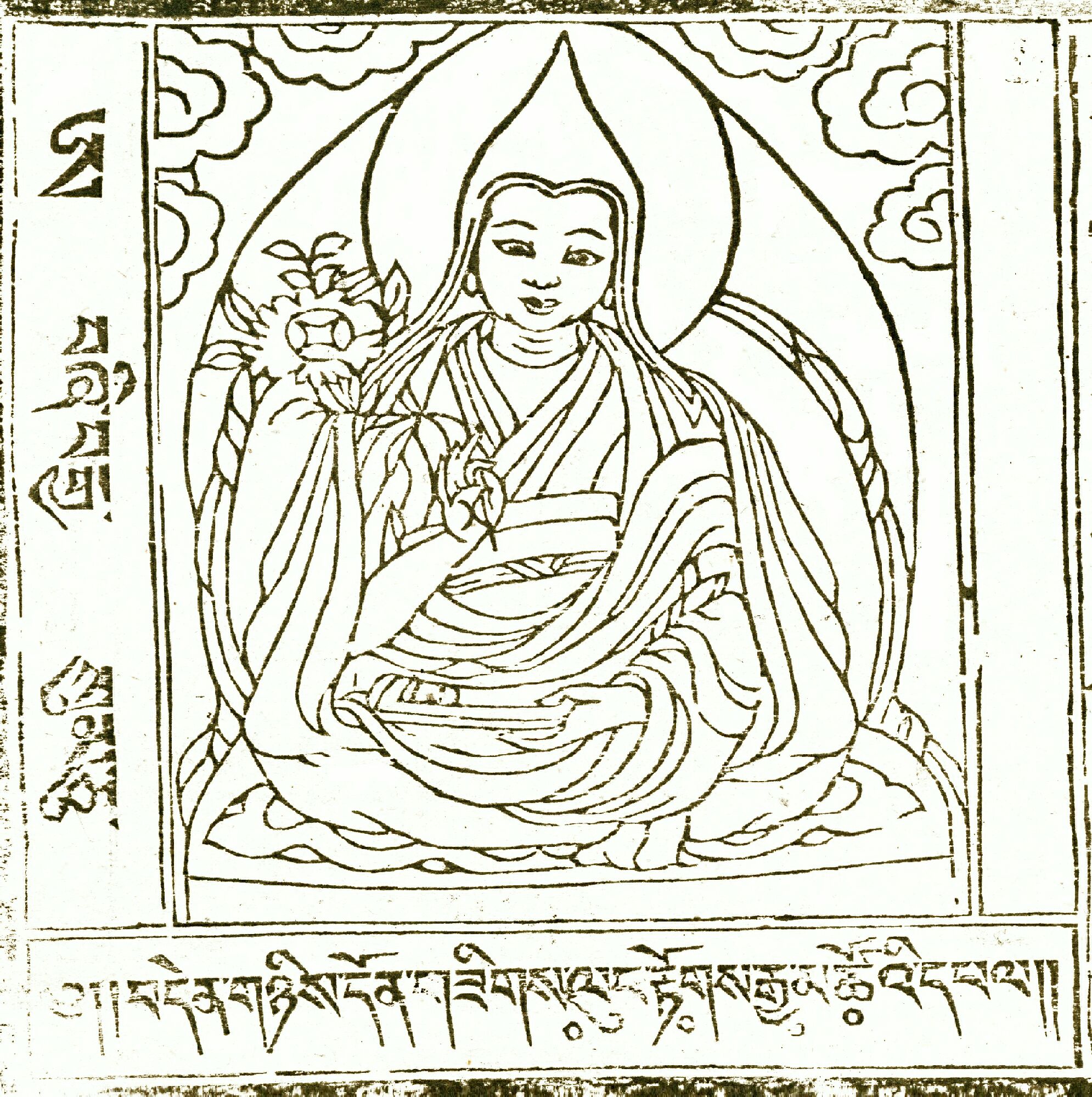
The Tenth Dalai Lama, Tsultrim Gyatso
b.1816 - d.1837
The Tenth Dalai Lama, Tsultrim Gyatso was the second of four Dalai Lamas who died in their youth; he passed away at the age of twenty-two.
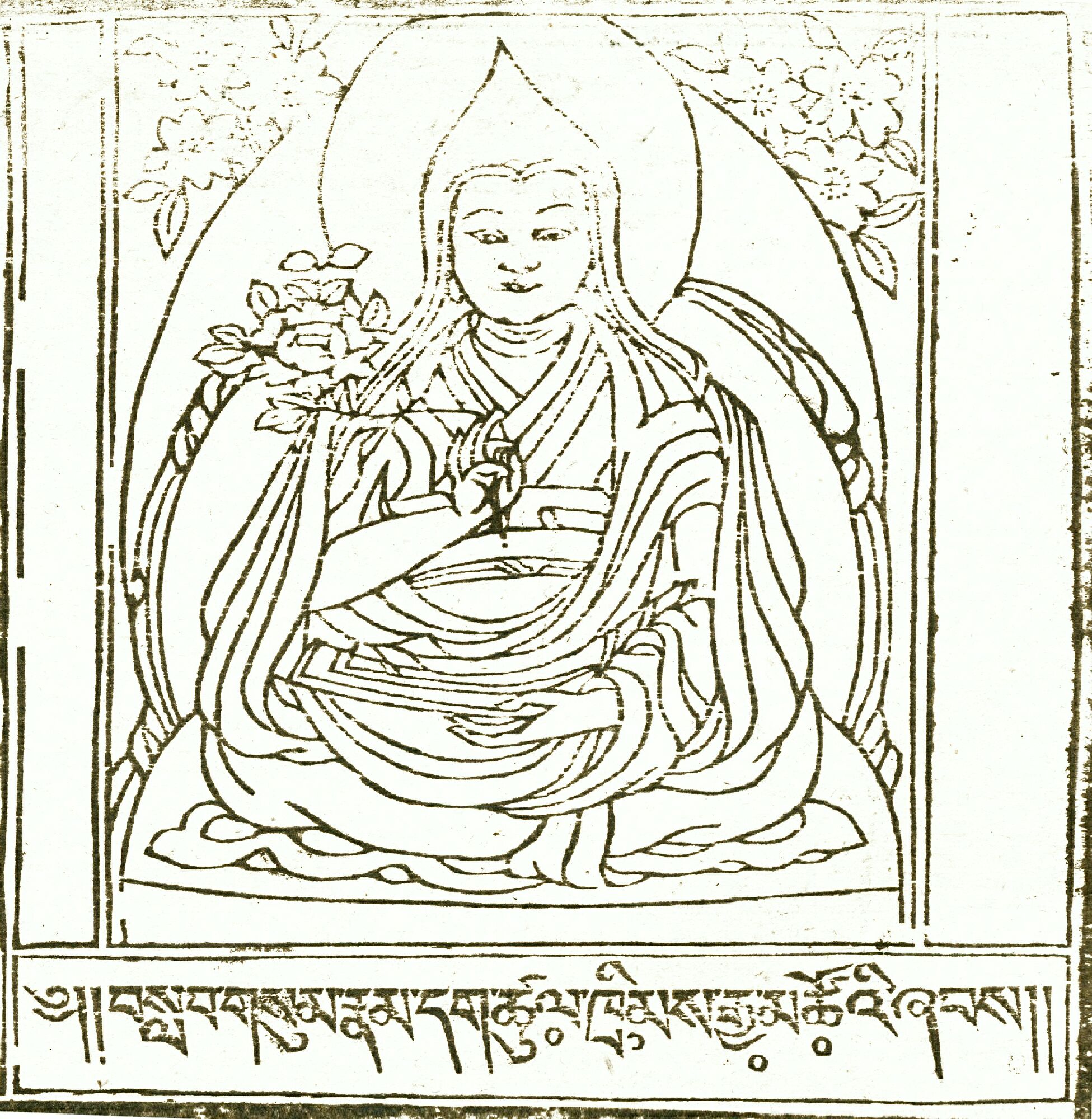
The Eleventh Dalai Lama, Khedrub Gyatso
b.1838 - d.1855
Khedrub Gyatso, the Eleventh Dalai Lama, lived only eighteen years. Enthroned in 1842, he studied at the Potala and in the three main Geluk monasteries of Lhasa. He received his novice vows from the Seventh Paṇchen Lama. Under his patronage the Uyab Zimchung, a new private residence in Norbulingka, was built; it was inaugurated in 1849 with a festive celebration that was the origin of the Zhoton summer festival still celebrated by Tibetans.
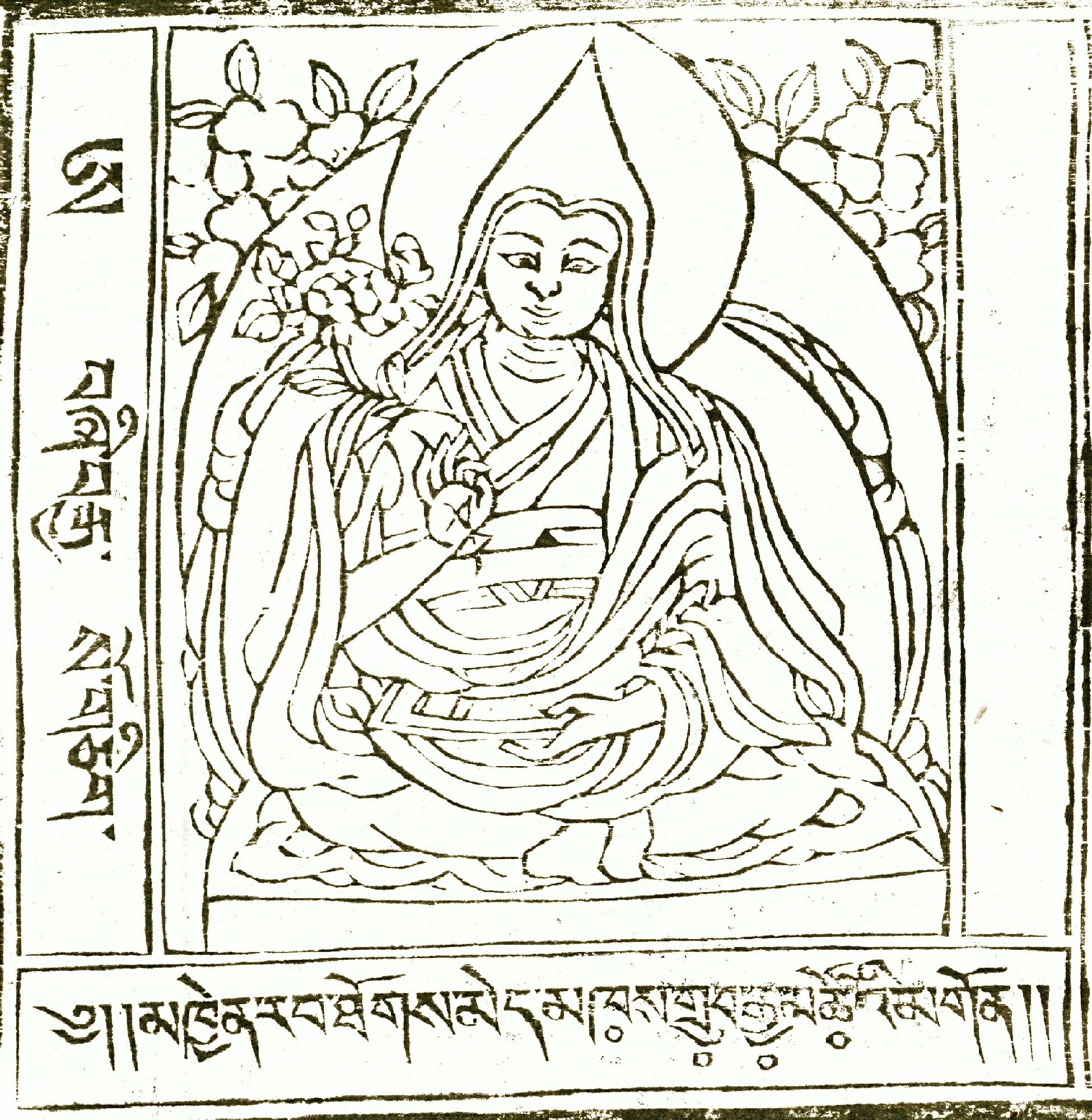
The Twelfth Dalai Lama, Trinle Gyatso
b.1856 - d.1875
The Twelfth Dalai Lama, Trinle Gyatso was enthroned at the age of five. He assumed control over matters of state at the age of seventeen but fell ill and passed away at the age of nineteen.
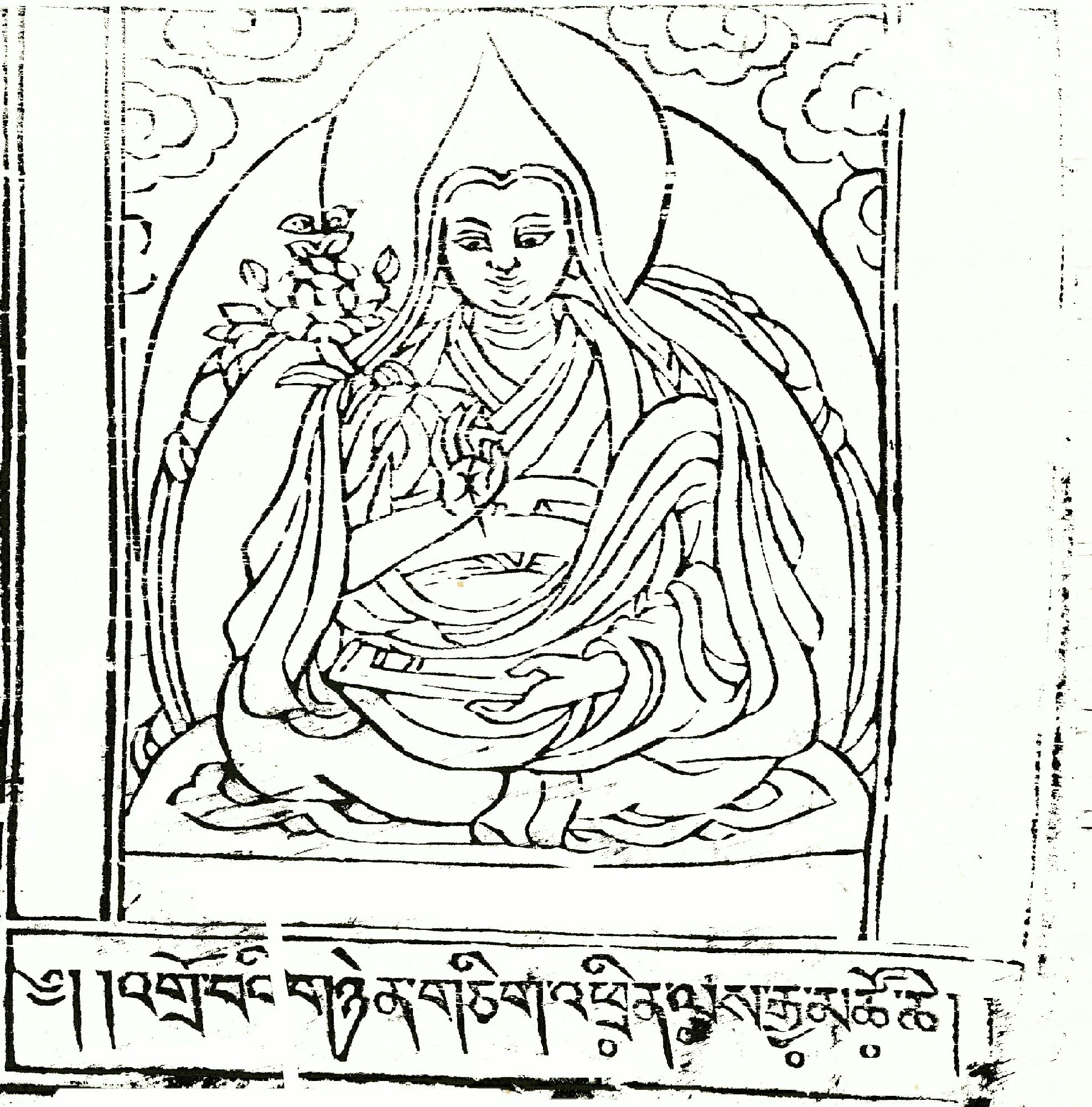
The Thirteenth Dalai Lama, Tubten Gyatso
b.1876 - d.1933
The Thirteenth Dalai Lama, Tubten Gyatso, lived through a turbulent time in Tibetan and world history. Forced into exile first by a British invasion and then by a Chinese invasion, the Thirteenth Dalai Lama learned about modern technology and different forms of government. Following the collapse of the Qing Dynasty, he declared independence for Tibet. His reforms and religious eclecticism put him in conflict with many conservative members of the Geluk clergy, who resisted his efforts to modernize Tibet.
